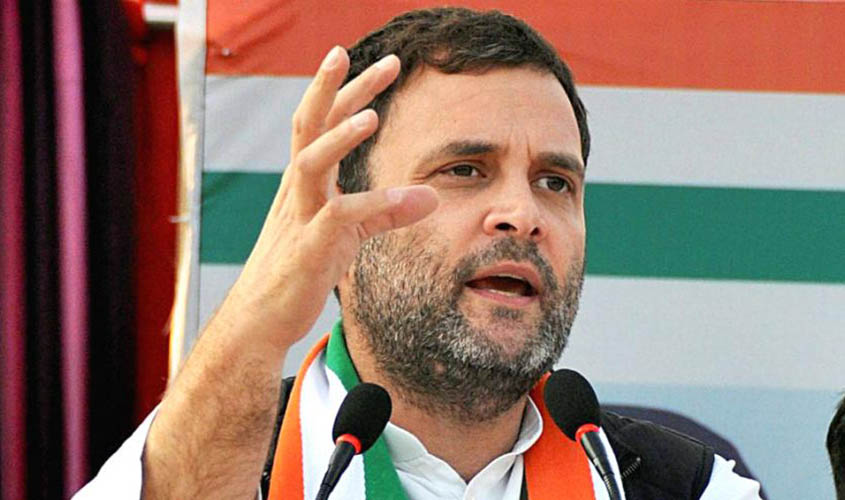The new Congress president must not remain tethered to past ways and beliefs.
This columnist was fortunate enough to have played an admittedly tiny role in Rajiv Gandhi’s initiation into politics, occasionally operating alongside the self-effacing Vijay Dhar at 1 Akbar Road, who was an effective sounding board and implementer of Rajiv’s futuristic vision, expressed among other ways through Rajiv’s harnessing of Chicagoan Satyen Pitroda to begin the telecom revolution in India. C-DAC, C-DOT, instant long-distance telephony and other innovations flowed from Satyen’s mind and got speedily translated into reality by Prime Minister Rajiv Gandhi, after whose time in office, both Pitroda as well as his plans and projects got jettisoned, to the detriment of national interest. Among other such harmful decisions that V.P. Singh took as Prime Minister was to mothball for an indefinite period all Airbus A-320 Indian Airlines aircraft because of the crash in Bangalore of such an aircraft in 1990. The cause was pilot error. However, in order to tar Rajiv Gandhi, Singh ordered Civil Aviation Minister Arif M. Khan to ground the entire (and new) A-320 fleet, among the first of several decisions that across two decades led to the present state of Air India. In 1986, listening to advisors who ought to have known better, Prime Minister Rajiv Gandhi launched a new era of competitive communalism in India by passing the Muslim Women’s Bill. In a show of moral courage rare in politics, Arif M. Khan resigned his ministership in protest at the government pandering to the extremist fringe within the overwhelmingly moderate Muslim community in India. The bill deprived Muslim women of the rights that their sisters from other faiths had. Not that this was a surprise. For by the close of 1983, Rajiv Gandhi had convinced himself to go slow on comprehensive reform and rely instead on the usual policy and political matrix. Vijay Dhar got replaced as Rajiv’s top aide by Arun Nehru, whose knowledge of paints was as profound as his understanding of politics was shaky. Sadly for his legacy, nearly a year before he became Prime Minister, Rajiv Gandhi entered the comfortable bubble of traditional machine politics and policy, in the process creating during his five-year term in office a disillusionment so widespread among voters that even a shaky coalition led by the flaky V.P. Singh trounced his party in 1989.
Elections in India are not won, but lost, and Narendra Modi’s 2016 demonetisation of the rupee has opened the way for the probable replacement of the NDA with an Opposition coalition in 2019 that will include the former ruling party. Should Congress president (CP) Rahul Gandhi learn from the errors made by both his parents, the presence of his party and he himself in such a government may ensure for it a five-year term. Conversely, should the new Congress president remain tethered to past ways and beliefs, the new government would most probably last less than two years. It would be a government where economic policy is incoherent, and where extremists within the minority community once again gain a veto over social policy. Yet again, preachers from the US former slaveholding south (assisted by hangers-on in India) will spew abuse on Hindu deities. Wahhabi extremists, emboldened by the return of the ancien regime, would launch terror attacks while preventing a modernisation of practices within a great religion. During the inevitable midterm Lok Sabha elections facing a government that repeats the very practices that A.K. Antony warned had led to the 2014 Congress collapse in the Lok Sabha, some hitherto obscure leader would emerge within the BJP who makes Yogi Adityanath seem moderate. Sonia Gandhi was responsible for Narendra Modi and Mulayam Singh Yadav for Yogi Adityanath. This cycle of action and inevitable reaction would get repeated once again. That is, unless Rahul Gandhi does what Rajiv Gandhi did not, and remain true to the 48-year old’s oft-expressed desire to ensure the transfer of 21st century values and best practices into the governance mechanism in India, of which Opposition parties play a big part. Instead, should Rahul repeat the UPA-2 team and policies, the fate of his party will be the same as was in 2014. For someone such as this columnist, who had the privilege of studying Rajiv Gandhi up close, there are worrisome signs (this time from afar) that Rahul may be getting persuaded by UPA-era grandees in his party that the old medicine is still effective, if delivered in a more presentable package. They are wrong. Such people may not have learnt much during the past 15 years, but the rest of the country has, especially the young. They seek a 21st century India, where practices such as killing or jailing people for reasons of diet, dress, speech or lifestyle are stamped out. They want a business environment of low taxes and regulation to replace the growth-stunting mixture of high tax rates and multiplying regulations that a self-described “minimum government” has carried forward from the UPA days.
Both the entry of women

